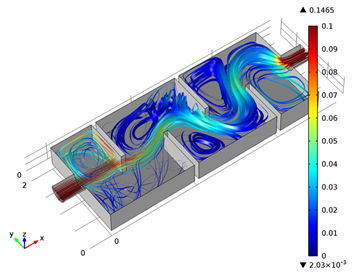
Water purification is the process by which chemicals, contaminants, and sediments are removed from dirty water to make it clean, and there are many processes through which this can be done. What you might not know, is that ozone molecules can be used as a means of disinfection in the purification process. “Ozonation” has been used to purify water, kill germs and bacteria in food, and even get rid of bad smells. Not only does ozonation provide clean water without producing potentially harmful by-products, it is also an environmentally-friendly form of purification.
About Ozonation and Water Purification
In a previous post, my colleague Fanny discussed how oxygen-filled microbubbles can be used as an environmentally-friendly way to restore water quality in contaminated lakes. While microbubbles can be used to reduce the concentration of toxic chemicals in the purification process, when employed alone this process isn’t enough to bring the water quality up to a drinkable standard. In order to turn natural water into drinking water, at least one step in the process must be a disinfecting step. Ozonation can serve this purpose and produce clean, drinkable water.
While ozone purification is quite prevalent in many European countries, it hasn’t quite caught on to the same level of popularity in the United States. Over the past few decades however, there has been increased concern surrounding the by-products that are created by chlorination, one of the most popular disinfection methods. Because of this and other recent developments, ozonation has been gaining popularity in the U.S. over the past few years.
How Water Purification Using Ozone Works
Ozone is a molecule made up of three oxygen atoms and it can be manufactured relatively easily by running a high voltage current through dry air. Similarly to the way the sun’s UV rays create ozone molecules, this voltage causes oxygen molecules to combine, forming ozone molecules.
Ozone is a highly unstable molecule, a property that allows it to react easily with other molecules it comes into contact with. The molecules would rather revert to the more stable oxygen gas molecule, and the remaining oxygen atom then more readily bonds with viruses and bacteria it comes in contact with. This process causes holes to form in the cell walls of organic organisms, a reaction that destroys bacteria, viruses, and many types of fungi.
Simulating an Ozone Water Purification System
In order to use ozone to purify water, you need a Water Purification Reactor like the one simulated below. Just to set the scale, a typical ozone purification reactor is about 40 m long and each chamber is about the size of a small room. The many chambers in the reactor cause the water and ozone to mix completely, allowing the ozone to come into contact with all of the contaminants in the water. By the time the water reaches the end of the reactor, the contaminants have been converted and the ozone molecules have broken into harmless oxygen molecules.

This model depicts fluid flow in an ozone water purification system.
The streamlines’ color represents the velocity of fluid flow and the
width is proportional to turbulent viscosity (mixing).
Let’s assume that the water has already been infused with ozone in a previous step. What’s modeled here (using COMSOL Multiphysics and the CFD Module) is the step that occurs after that, when the liquid enters the reactor and flows through a series of chambers. As the water enters the chamber, the jet hits the wall of the first chamber leaving half of the stream remaining in the chamber, creating a recirculation zone where water and ozone mix, while the other half continues through the reactor, spreading out into subsequent rooms. The further the water continues down the reactor, the more the water and ozone mix.
Optimizing Ozone Water Purification
Although ozonation produces fewer by-products than most other purification methods, it does still have a few drawbacks. When ozone comes into contact with bromide for an extended period of time it can form bromate ions, a suspected carcinogen. In order to prevent this from happening, the time spent in the reactor, the amount of mixing that takes place, and the path the water takes when traveling through the reactor must be understood. This can be predicted and optimized using the reactor above when more physics are taken into account. Simulation allows scientists to ensure that water and ozone stay in contact for just long enough to remove contaminants and prevent bromate ions from forming.


Comments (0)